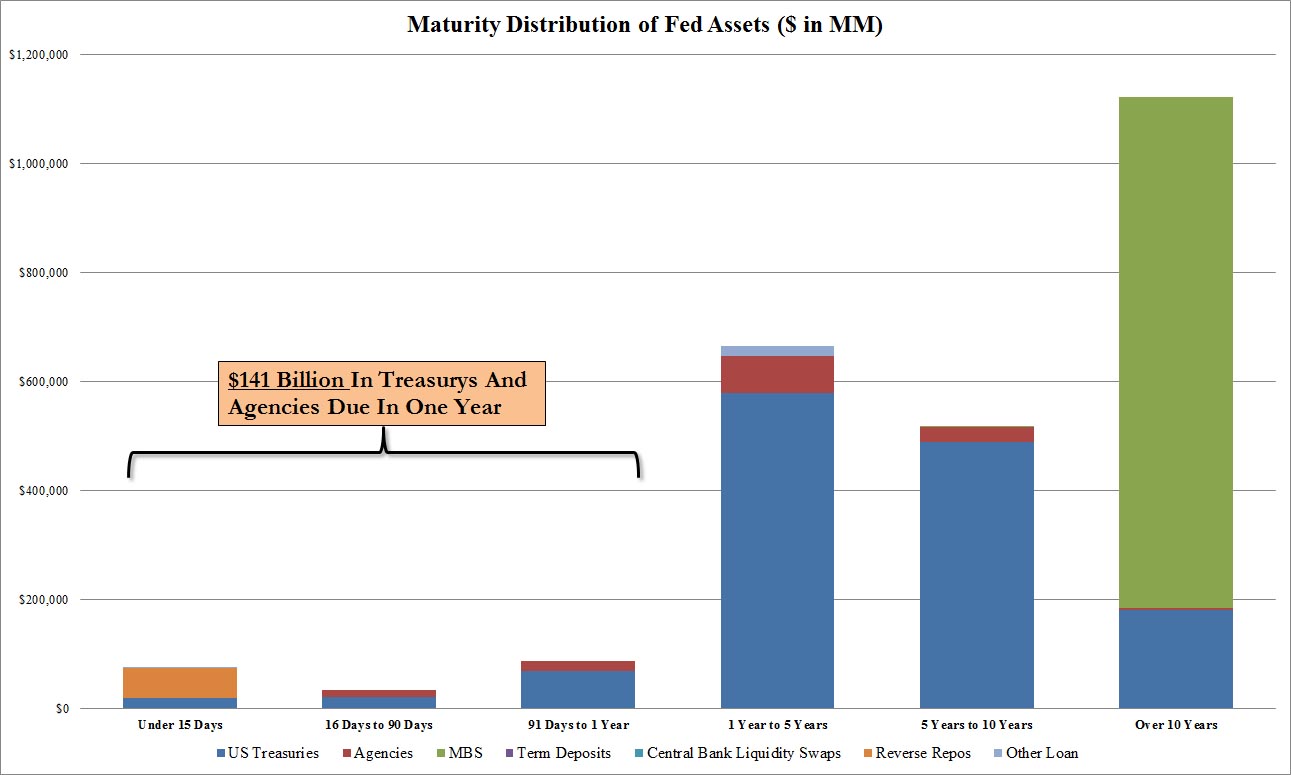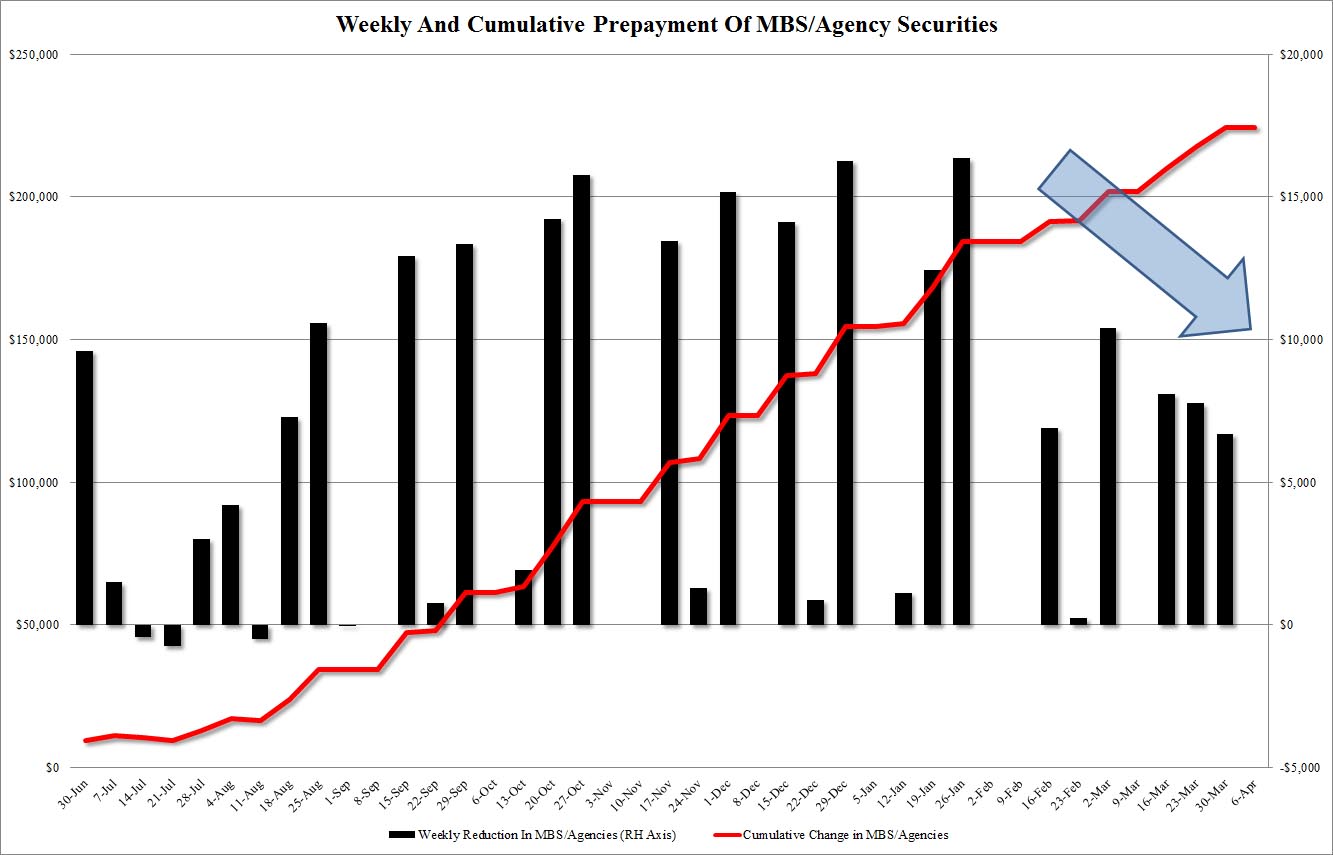The Stealth QE Debate: QE3 or No QE3?
As discussed in Stealth QE, Perpectual Motion QE Machine, Jim Rickards postulates that the Fed may end the QE2 come June without going into QE3, by operating a stealth QE program where it can continue to fund debt monetization without expanding its balance sheet.
Today, in what appears to be a direct rebuttal to this idea, ZeroHedge argues that the rolling over of Treasuries Debt and Mortgage Backed Securities (MBS) prepayments are not sufficient to do the job.
Recently there has been a meme spreading in the internet that the Fed does not really need to do QE3 as the central bank can maintain bid interest at sufficiently high levels by merely rolling and extending maturing debt, a form of QE Lite Version 2, where the Fed’s balance sheet is kept constant even as MBS are prepaid and Treasuries mature. The argument goes that based on some “logic” and lots of estimates it is “reasonable” to assume that $750 billion in MBS prepays and Treasury maturities will depart the Fed’s balance sheet and need to be repurchased in the open market in keeping with a pro forma QE Lite V2.0 mandate. This is false. Here’s why.
First: one does not need to engage in complex calculations of what the maturity profile of the Fed’s holdings are - it is there available for anyone with an internet connection to see for themselves. In each and every H.4.1 update (go ahead, click) the Fed lists the maturity portfolio of its assets. The most interesting for the purposes of this analysis is the securities due in under one year. This includes in addition to Treasurys, MBS and Agencies, also the following items completely irrelevant for this exercise: Reverse Repos , Term Deposits, Liquidity Swaps and Other loans. As the chart below shows, and as anyone with a calculator can estimate, there is $141 billion in Treasury, Agency and MBS maturities in under one year (and just $108 billion in purely Treasury holdings). This number is one tenth of the ongoing monetization of $900 billion in USTs and MBSs in the November-June period, or $1,350 billion annualized. In other words: simply rolling MBS and Treasuries will have one tenth the impact of the ongoing quantitative easing program. Period. End of Story.
So what about MBS prepays? Well, as we had thought we had made abundantly clear, the level of Fed MBS prepays is directly correlated with prevailing mortgage rates: the lower the mortgage rate, the more willing the end consumer is to “put” an existing mortgage to the Fed and open a cheaper one. And vice versa: the higher rates go, the less prepays the Fed experiences. Lo and behold: actually looking at the data, confirms precisely this. As the chart below shows, while in H2 2010, when 10 Year, and thus Mortgage rates, were dropping fast, prepays to the Fed, and thus the rate of QE Lite activity was very high: peaking at $45 billion in December. Alas, since then, due to surging rates, the prepay rates has plunged, and the February and March total of $40 billion is less than all of December. Should rates continue to rise, which they will if fears of no QE3 accelerate, and Bill Gross ends up being right, this number will plummet and could potentially hit zero as nobody has an incentive to prepay a mortgage when the existing one is far more economic.
So putting it all together: assuming no QE3, and just continued rolling and transforming MBS in UST purchases, means that the Fed will have about $12 billion in average UST purchases per month from maturity extension, and about $20 billion from MBS prepays. This is at best one quarter of the amount the Fed monetizes per month currently and is largely inadequate to continue funding the US deficit. Also, should the 10 Year rate jump to over 5%, QE Lite will halt indefinitely, meaning the only source of dry powder for future monetization will be rolling maturity extensions, which are about one tenth of current monthly funding needs.
Lastly, and people tend to forget this, the primary reason why the Treasury needs the Fed to be the buyer of only resort is that no matter what happens to interest rates, and cash outlay to the Fed ends up being a revenue item for the Treasury! In fact, the higher the rate, the greater the purported revenue from Ben Bernanke, even though in reality it ends up being a wash transaction. For Tim Geithner the ideal situation would be one where the Fed owned all US interest paying instruments, as interest expense would be shortly reclassified as Treasury revenue. Should the Fed not be a key player in monetization, this is money that would ultimately leave the US. And if rates were to jump the annual interest outlays would actually be quite dramatic.
Source: ZeroHedge






 More Charts: 1-Month, 1-Year, 5-Year, 10-Year
More Charts: 1-Month, 1-Year, 5-Year, 10-Year More Charts: 1-Month, 1-Year, 5-Year, 10-Year
More Charts: 1-Month, 1-Year, 5-Year, 10-Year

I know this if off topic but I’m seeing into beginning my own blog and was inspiring what all is required to get setup? I’m assuming having a blog like yours would cost a pretty penny? I’m not very web savvy so I’m not 100% certain. Any suggestions or advice would be greatly appreciated. Many thanks
Hi Ashly,
Thanks for visiting. It’s quite easy to setup your own blog. Just got to wordpress.com or blogspot.com , open a free account, and you can start immediately.
If you don’t need your own domain name, then it’s totally free. What this means is that your blog address will be something like ashlykircher.wordpress.com or ashlykircher.blogspot.com. But if you want your blog address to be ashlykircher.com, then it’ll cost you less than $20/year.
If you plan to operate a blog only, blogspot is easier to use, but if you want to run a website & a blog (like politicalmetals), then I would recommend wordpress.
Hope this helps!